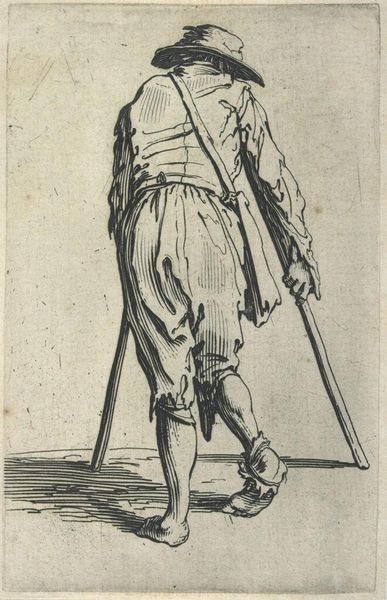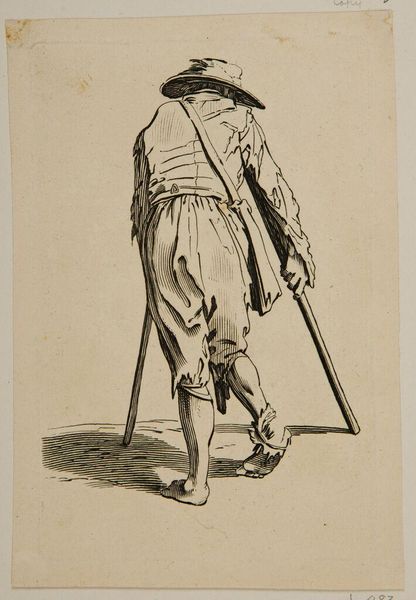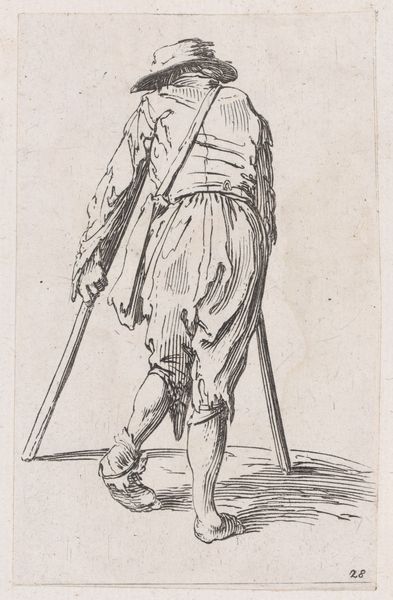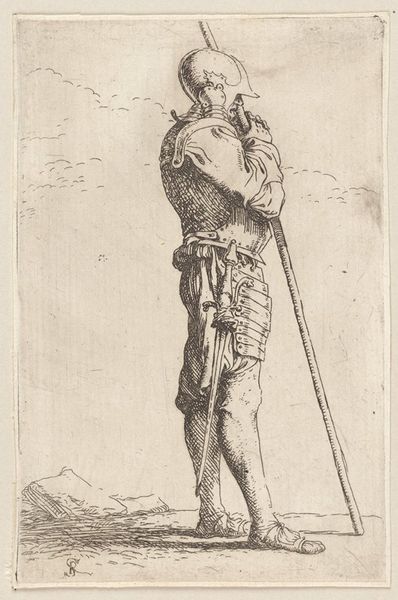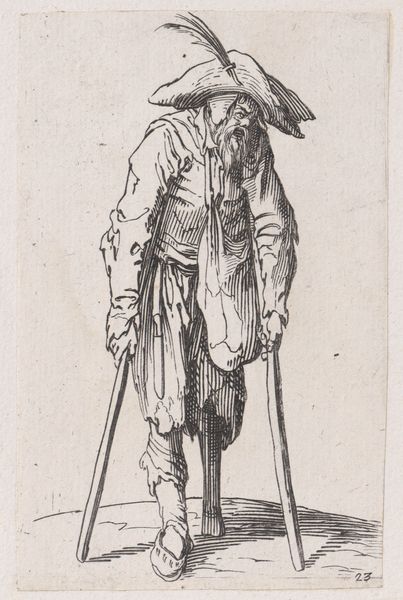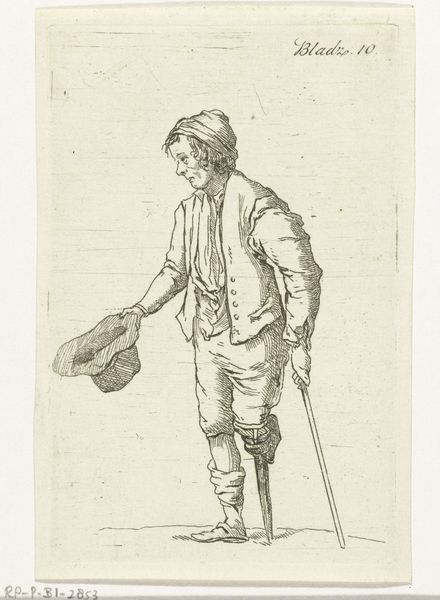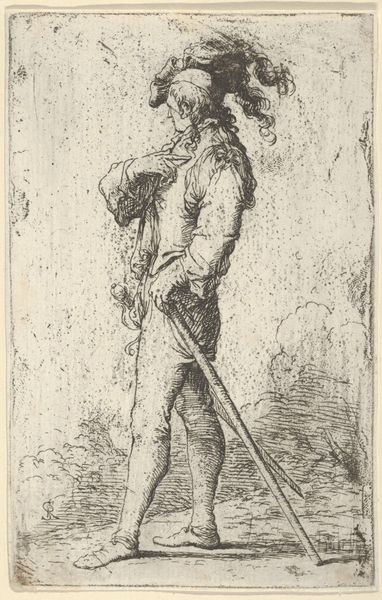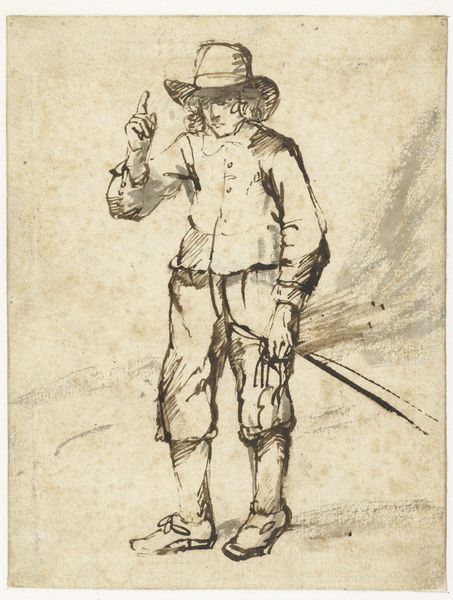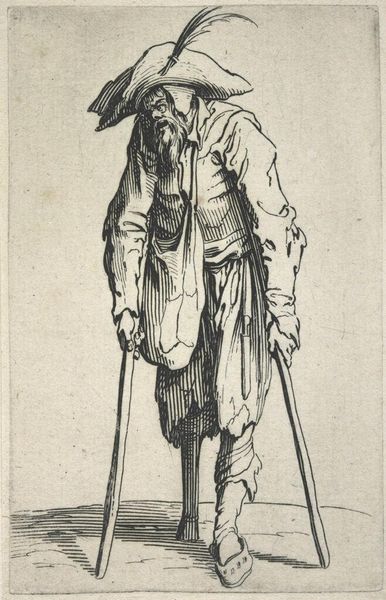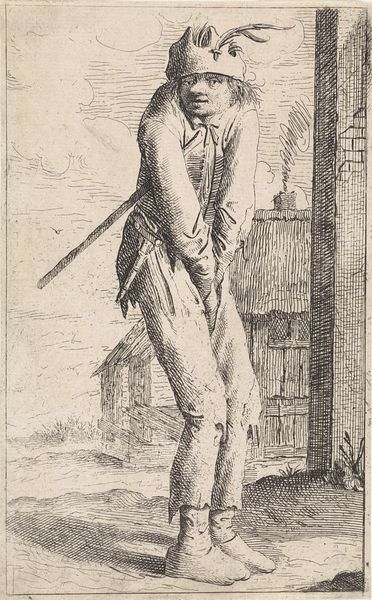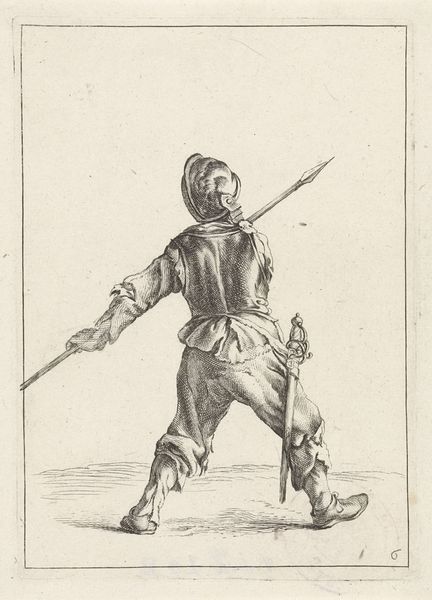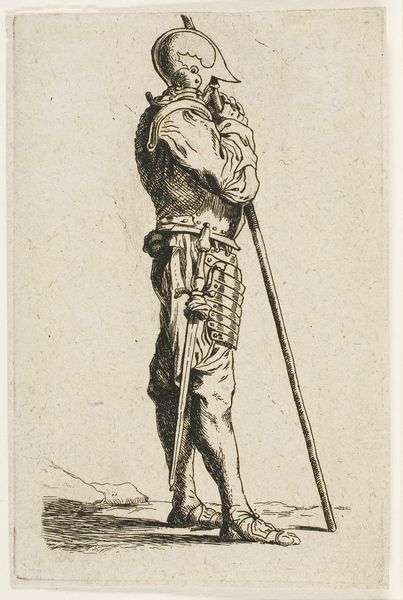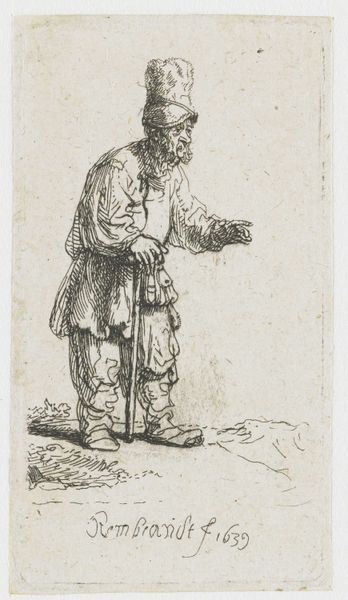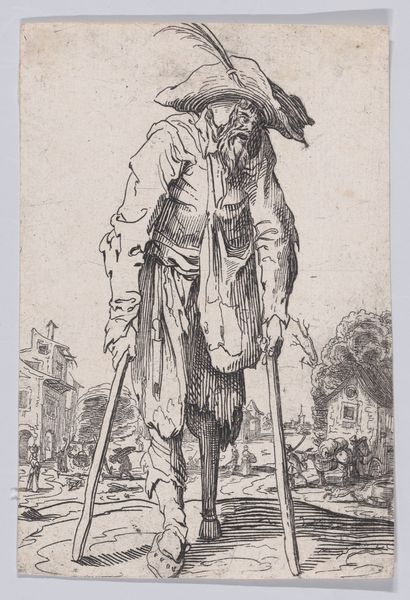
drawing, print, etching
#
portrait
#
drawing
#
ink drawing
#
dutch-golden-age
# print
#
pen sketch
#
etching
#
figuration
#
genre-painting
#
realism
Dimensions: height 91 mm, width 62 mm
Copyright: Rijks Museum: Open Domain
Curator: Here we have Willem Basse's etching, "Man op krukken," dating from sometime between 1633 and 1672. What are your initial thoughts? Editor: Gosh, the poor guy! He looks like he's trudging through some unforgiving landscape. There’s such rawness in the etching style – the shadows digging into his form seem to mirror his hardships, you know? Curator: Indeed. Note how the figure dominates the composition. The starkness of the etching, with its pronounced use of line and shadow, amplifies the subject’s weariness, lending itself to a type of empathetic viewing. Editor: Absolutely. It makes you wonder about his story, doesn’t it? I find his resilience captured in the angle of his body. His eyes focused straight ahead even as one leg appears almost entirely missing from his tattered pants. What would we call that if not courage? Curator: Interesting point. Focusing on the materiality, Basse employed etching, an intaglio printmaking technique that allows for intricate linework and tonal variations through controlled biting of acid on a metal plate. Consider the realism in how he depicts a very down-to-earth subject here: no heroic or sentimental glorifications. Editor: The detail in that crazy fur hat, contrasted with the tattered clothes is masterful storytelling! It’s not just the subject's physical struggle that jumps out, but a subtle nod towards Dutch genre paintings portraying ordinary lives. It's that grittiness, combined with subtle artistry, that truly resonates, right? Curator: Precisely. The print becomes an embodiment of socio-economic circumstances. This small-scale work encapsulates broader narratives of survival and the everyday realities of 17th-century life, and so functions, from our contemporary perspective, almost like a sociological study. Editor: Thinking about Basse bringing that ordinary experience forward, I find it’s really his empathy as an artist that lets this man with crutches walk right out of the gallery. He is an evocative image, a symbol of life's burdens made very intimate. Curator: Yes. It seems that by delving into the formal qualities of Basse's “Man op krukken,” we have also, perhaps, come a little closer to feeling what it must be to walk in his shoes.
Comments
No comments
Be the first to comment and join the conversation on the ultimate creative platform.
